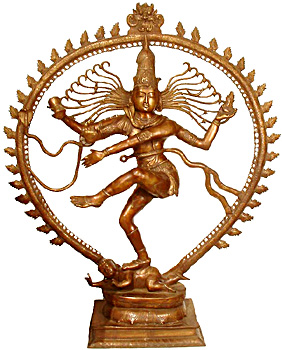 Dancing is an imperative part of Indian theatre. The movements and position of hands, feet, waist, thighs, back, abdomen and chest play a major role in dancing. In India dancing flourished under royal patronage and it was also an important part of the education of the people. Folk dances in a multitude of forms have played an important part in the communal life of the people. Indian dancing is a traditional art and as such it has fixed ends and established means of operation. Dancing, thus, adds on to the element of acting.
Dancing is an imperative part of Indian theatre. The movements and position of hands, feet, waist, thighs, back, abdomen and chest play a major role in dancing. In India dancing flourished under royal patronage and it was also an important part of the education of the people. Folk dances in a multitude of forms have played an important part in the communal life of the people. Indian dancing is a traditional art and as such it has fixed ends and established means of operation. Dancing, thus, adds on to the element of acting.
The movements of hands, feet, thighs, abdomen and chest are very significant. The motion is sometime slow and sometime fast. These movements are called matrika or mothers of dance. A combination of three or four of matrikas is a karana or action. The Natyashastra prescribes one hundred and eight such karanas. Different combinations of these actions are called angaharas or gesticulations. Thirty two such gesticulations are enumerated in the Natyashastra. There are four different ways to end the dance gracefully and they are called recakas. Lord Shiva in his well known aspect of Nataraja is pre-eminently the lord of dances. After the destruction of the sacrifice of Daksa, Shiva danced with different gesticulations to the tune of music. He imitated all the principal gods and assumed different postures. These dances were known as pindibandhas. Lord Shiva taught Tandu the art of dancing and so dancing has been known as tandava.
According to the Natyashastra, there are two types of dance. One is the tandava, the violent dance of men, invented by Lord Shiva himself and lasya, the tender and amorous dance of Parvati. In Natyashastra, lasya is carefully analysed into ten parts. It shows the essential union of song and dance. The divisions of lasya, of course, appear to ignore their nature as parts of a dance, but it must be kept in mind that the motions of performers are vital in the presentation. The first two act of Malavikagnimitra and the first act of Ratnavali will enlighten one with a clear idea of dancing. In Natyashastra, the science and art of dancing are known as abhinayavidya. This is divided into two parts which are sastra (science) and prayoga (performance). The prayoga is further categorised into kriya (self acting) and sankranti (imparting lessons in dancing). The actual performance comprises two parts, angasausthava (graceful contours) and abhinaya (gesticulation, expressing sentiment). Graceful contours can be demonstrated in a twofold manner, through viralanepathya (thin costume) and body control.
In abhinayavidya, bhava is the most important feature. The success of an actor lies in his bringing in bodily form a particular emotion. Reference to dancing is found in Mricchakatika, and also in Ratnavali where the maids dance before the kings who show deep appreciation of their art. In the Balacarita, there is a reference to a Hallisaka dance. Girls of cowherds, though naturally appealing, look extremely beautiful when they are dressed up in garments of assorted hues. Thus in Indian theatre dancing is an essential part.




















